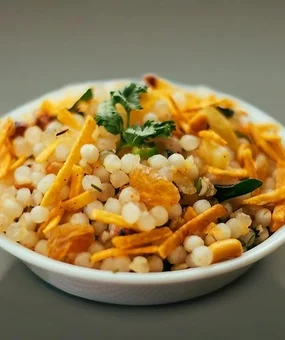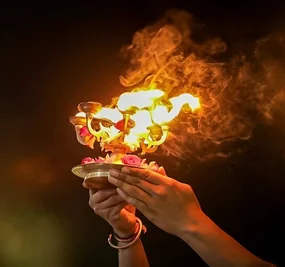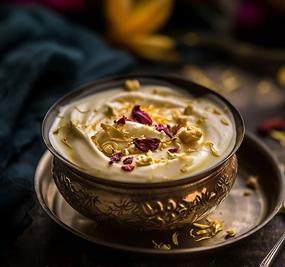“No worship is complete without offering something to the deity. Lord Shiva is very simple and innocent, and doesn’t expect much; hence, he is called Bholenath. One just needs to offer ‘bel-patra’ to him. Bel-patra offering signifies the surrender of all three aspects of one’s nature—tamas, rajas, and sattva. You have to surrender the positives and negatives of your life to Lord Shiva and become free.”
– Gurudev Sri Sri Ravi Shankar
What is bel patra?
Bel patra is a plant also known as bilva patra in Sanskrit. The word ‘bilva’ means the bel tree and ‘patra’ means leaf. The plant, bel patra, also includes the bel fruit, which comes with a hard shell and tastes a little tangy. There are various names and pronunciations of bel patra depending on the region you belong to in India. The plant has a cultural, social, and therapeutic value.
Why do we offer bel patra to lord shiva?
When we worship Lord Shiva, bel patra is one of the most important items offered. It is said that the leaves of bel patra are Lord Shiva’s favorite. The three-leaf bel patra symbolizes the Trinity: Brahma, Vishnu, and Mahesh (Shiva). According to the scriptures, the three leaves of bel patra also represent the three eyes of Lord Shiva.
Jains also consider bel patra auspicious. It is believed that the 23rd Tirthankara, Parshavantha, attained nirvana under this tree.
Surprising benefits of bel patra
It might also interest you to know about the diverse uses of bel patra – as a medicine, a face pack for curing skin problems, or as a refreshment consumed during summers.
1) Medicinal importance of bel patra:
a) Bel patra has very unique medicinal benefits. Its fruit is a rich source of vitamins and minerals that includes Vitamin C, Vitamin A, riboflavin, calcium, potassium, fiber, Vitamin B1, B6, and B12 – that is required for the overall growth and development of the body.
b) According to Ayurveda, there are three doshas – Vatta, Pitta and Kapha, and the consumption of bel patra helps in balancing all the three doshas.
c) Bel fruit contains antioxidants and has laxative properties that help cure stomach-related diseases like diarrhea, dysentery, vomiting; it also strengthens the digestive system.
d) Consumption of bel patra helps control lifestyle diseases such as diabetes, hypertension, heart problems, and cholesterol.
2) Bel patra benefits for skin:
a) If you suffer from odor troubles due to excess perspiration or rashes on the skin, then applying the mixture of bel patra for a few days will help reduce body odor.
b) Eating or drinking the juice of bel patra can help solve the problem of hair fall and smoothen rough and dry hair.
c) The mixture of bel patra helps remove white spots on the skin that may develop as a side effect of medicine.
How to grow bel patra at home
Bel patra plant is not very easily available as it is usually grown in forests. According to Skanda Purana, the bel patra plant grew with the sweat droplets of Goddess Parvati and so is considered very auspicious and sacred. To grow a bel plant at home, the best time to sow the root is during the monsoon.
Vastu benefits of bel patra
The bel patra plant takes away all negative vibes and fills the surroundings with positivity as it also confers good health and prosperity. Lighting a lamp under the bel tree is considered good for gaining knowledge.
Bel patra lemonade recipe
In summers, the bel patra is also used as a refreshing summer cooler drink to beat the heat. Let’s take a look at how you can make this drink at home.
Preparation time: 10 minutes
Cooking time: 0 minutes
Total time: 10 minutes
Difficulty level: Easy
Ingredients:
- 1 bel fruit
- 1-2 glasses of water
- ½ lemon
- 4-5 mint leaves
- Jaggery/brown sugar to taste
How to prepare:
- Take a bel fruit and extract the pulp.
- Keep the pulp in a bowl and add a glass of water.
- Mash the pulp and separate the seeds.
- Filter the water from the pulp.
- Crush mint leaves.
- Take a glass and add crushed mint leaves and lemon.
- Add filtered juice in the glass and mix it well.
Note: Bel fruit is usually sweet, add jaggery as per your taste.




















